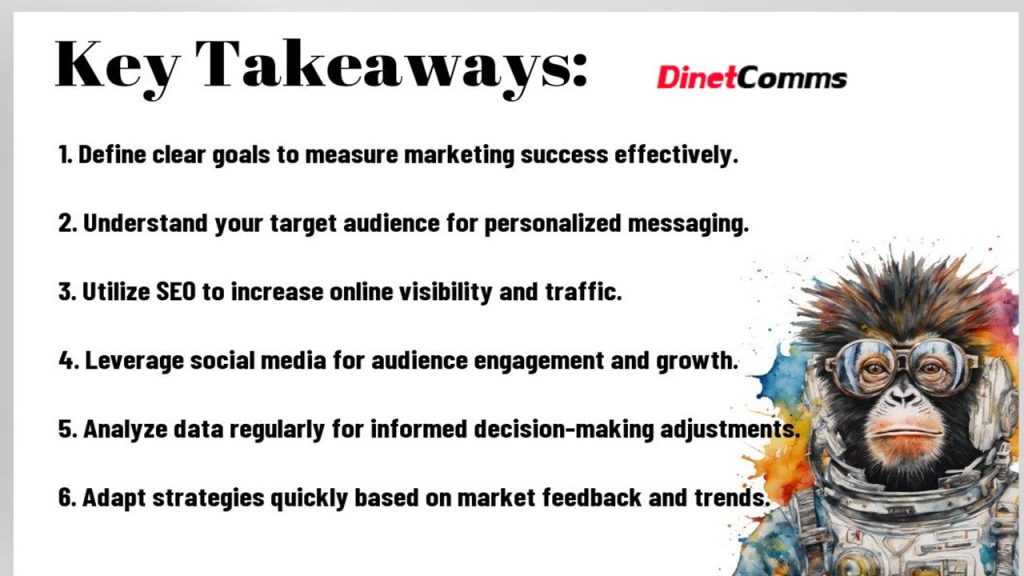Data-Driven Advertising: Leveraging Analytics for Better Campaign Performance
Advertising today is more powerful than ever, thanks to data-driven strategies that provide you with crucial insights into your audience’s behavior. By leveraging analytics, you can identify key performance metrics, optimize your campaigns in real-time, and ultimately achieve better results. You’ll discover how to harness the wealth of data at your disposal to make informed decisions, improve ROI, and stay ahead of your competition. This guide will help you navigate through the intricacies of data-driven advertising and unlock its full potential for your marketing efforts.
Key Takeaways:
- Data Collection: Effective advertising starts with comprehensive data collection, ensuring you gather relevant insights about your audience and their behaviors.
- Analytics Tools: Utilize advanced analytics tools to interpret data, helping you identify trends and patterns that influence your campaign strategies.
- Targeting Optimization: Leverage analytics to refine your targeting strategies, ensuring campaigns reach the right audience segments for higher engagement.
- Performance Measurement: Establish metrics and KPIs to assess campaign performance, allowing for real-time adjustments to improve outcomes.
- Cost Efficiency: Data-driven approaches can lead to greater cost efficiency, maximizing ROI by reducing wasteful ad spending.
- A/B Testing: Implement rigorous A/B testing to compare different strategies and identify the most effective elements of your campaigns.
- Continuous Improvement: Embrace a culture of continuous improvement by regularly analyzing data and refining processes based on performance insights.
Understanding Data-Driven Advertising
To fully grasp the power of data-driven advertising, it’s vital to understand its foundational elements and significance in the marketing landscape.
Definition and Importance
Definition: Data-driven advertising refers to the practice of utilizing analytics and data insights to inform and optimize your advertising strategies. In today’s highly competitive market, leveraging data allows you to make informed decisions that can significantly enhance your campaign performance, effectively targeting the right audiences and maximizing your return on investment (ROI).
Key Components of Data-Driven Campaigns
On your journey to creating successful data-driven campaigns, recognizing the key components is vital. These components enable you to harness data effectively, driving superior results.
Components of data-driven campaigns include data collection, analytics tools, target audience segmentation, and performance tracking. By meticulously gathering rich datasets from various channels, you can utilize analytics tools to extract meaningful insights. Segmentation allows you to tailor your messaging to specific audience groups, enhancing engagement. Finally, performance tracking gives you the ability to measure outcomes, enabling real-time adjustments that pave the way for ongoing improvement. This systematic approach not only elevates your campaigns but also minimizes risks associated with inefficient spending.

Analytics and Metrics
You need to understand the importance of collecting the right data to optimize your advertising campaigns. This involves identifying the types of data that can provide valuable insights into your audience and performance metrics.
Types of Data to Collect
Collecting the right data is crucial for effective advertising strategies. You should focus on gathering:
| Demographic Data | Information such as age, gender, and location. |
| Behavioral Data | User actions and interactions with your ads. |
| Engagement Metrics | Metrics like click-through rates and time spent on ads. |
| Conversion Rates | Data on how many users completed desired actions. |
| Attribution Models | Understanding which channels are driving conversions. |
Any combination of these data types will help you gain a comprehensive view of your campaign’s performance.
Utilizing Analytics Tools
The right analytics tools can significantly enhance your ability to track and measure your advertising effectiveness. Tools like Google Analytics, Facebook Insights, and various A/B testing platforms provide deep insights into user behavior and campaign performance.
For instance, by leveraging Google Analytics, you can monitor user interactions in real-time, adjust your strategies based on live feedback, and identify any potential pitfalls early on. Tools that offer detailed reports and visualizations can help you recognize trends and make data-driven decisions faster. Ensuring that you know how to use these platforms effectively is key to maximizing your advertising outcomes.
Strategies for Effective Campaign Performance
Many advertisers today recognize the importance of employing data-driven strategies to enhance the effectiveness of their campaigns. By harnessing the power of analytics, you can make informed decisions that lead to improved outcomes. Here are some key strategies that will elevate your campaign performance.
Segmenting Target Audiences
Target your advertising efforts by segmenting your audience based on demographics, behavior, and interests. This allows you to create personalized messages that resonate more deeply with each group, potentially increasing engagement and conversion rates.

Real-Time Optimization Techniques
Campaign performance can be significantly enhanced through real-time optimization techniques. By monitoring your campaigns as they run, you can quickly identify what’s working and what isn’t, allowing you to adjust elements such as targeting, creativity, and spending instantly.
Strategies like applying predictive analytics and dynamic adjustments enable you to react swiftly to changing market conditions. By focusing on real-time data, your campaigns can stay ahead of trends, ensuring that you deliver the most relevant content to your audiences consistently.
A/B Testing for Insights
Performance analysis through A/B testing gives you keen insights into what resonates best with your audience. By comparing two versions of an ad or landing page, you can determine which elements drive better results and optimize accordingly.
Understanding the importance of A/B testing means you can make data-backed decisions that lead to successful campaign iterations. This process not only refines your messaging but also helps you allocate your budget more effectively, ultimately enhancing your return on investment.
Challenges and Best Practices
Despite the potential of data-driven advertising, several challenges can impede your campaign’s effectiveness. You may encounter issues such as data fragmentation, privacy concerns, and the complexity of analytical tools. Recognizing these obstacles is vital for optimizing your strategies and ensuring that your campaigns yield the best possible results.
Common Pitfalls in Data-Driven Advertising
On your journey to implementing data-driven advertising, you might fall into several common traps. These include relying too heavily on automated insights without critical analysis, failing to segment your audience properly, and neglecting to test and optimize your campaigns regularly. Being mindful of these pitfalls can help you enhance your approach and achieve improved campaign performance.
Ethical Considerations in Data Usage
The usage of consumer data in advertising raises important ethical considerations that you must not overlook. As regulations surrounding data privacy tighten, understanding your obligations to consumers will help you maintain their trust. Ensuring that your data practices are transparent, respectful, and compliant with laws like GDPR or CCPA is paramount for your branding and reputation.
A comprehensive approach to ethical data usage also involves obtaining explicit consent from users when collecting data. You must communicate clearly how their data will be utilized and ensure that you provide value in return for this information. This transparency fosters a sense of trust, which can lead to stronger customer relationships and long-term loyalty.
Future Trends and Innovations
Future advancements in technology are poised to reshape the landscape of data-driven advertising. You can expect an increase in AI-powered tools that offer smarter data analysis, enabling you to make more informed decisions. Furthermore, the growth of machine learning will facilitate hyper-personalization, allowing you to connect with consumers like never before.
Plus, emerging trends such as voice search optimization and augmented reality in advertising are set to offer innovative avenues for engagement. As these technologies evolve, you will have the opportunity to leverage them creatively, ensuring that your data-driven campaigns stay ahead of the curve. By remaining adaptable and proactive, you can harness these innovations to drive better performance and achieve your advertising goals.
Summing up
Taking this into account, leveraging analytics in your advertising campaigns is necessary for achieving optimal performance. By analyzing data, you can gain valuable insights into your audience’s behaviors and preferences, allowing you to tailor your strategies accordingly. This targeted approach not only enhances engagement but also maximizes your return on investment. Embracing data-driven advertising empowers you to make informed decisions, ultimately driving more effective campaigns and elevating your brand’s visibility in a competitive marketplace.
FAQ
Q: What is data-driven advertising?
A: Data-driven advertising refers to the strategy of using data analytics to inform advertising decisions and optimize campaign performance. By collecting and analyzing data from various sources like customer behavior, demographics, and purchasing patterns, advertisers can create more targeted, effective campaigns that yield better results.
Q: How does analytics improve campaign performance?
A: Analytics provides insights into audience preferences and behaviors, which helps advertisers tailor their messaging and targeting. By examining metrics such as click-through rates, conversion rates, and customer engagement, marketers can adjust their strategies in real-time, ensuring their campaigns resonate with the intended audience and achieve desired goals.
Q: What types of data are typically used in data-driven advertising?
A: Various types of data can be utilized, including demographic data (age, gender, location), behavioral data (online activity, purchase history), psychographic data (interests, values), and contextual data (time of day, device used). Combining these data types can provide a comprehensive view of the target audience, enabling more personalized advertising strategies.
Q: What tools are available for data-driven advertising?
A: Numerous tools exist for data-driven advertising, including Google Analytics, Adobe Analytics, Tableau, and various Customer Relationship Management (CRM) systems. These platforms help gather, analyze, and visualize data, allowing marketers to derive actionable insights and track the performance of their campaigns effectively.
Q: What is the role of A/B testing in data-driven advertising?
A: A/B testing plays a crucial role in data-driven advertising by allowing marketers to experiment with different elements of their campaigns. By comparing two versions of an advertisement (e.g., different headlines or images) and measuring their respective performances, advertisers can determine which option drives better engagement and conversions, leading to more informed strategic decisions.
Q: How can small businesses leverage data-driven advertising?
A: Small businesses can leverage data-driven advertising by utilizing affordable analytics tools and social media platforms that offer targeting capabilities. By starting with a clear understanding of their audience and using analytics to track campaign performance, small businesses can optimize their advertising spend and improve the effectiveness of their marketing efforts, even with limited budgets.
Q: What are some challenges of implementing data-driven advertising?
A: Some challenges include data privacy concerns, the integration of multiple data sources, and the need for skilled personnel to analyze and interpret data correctly. Additionally, businesses may struggle with over-reliance on data, potentially ignoring creativity and intuition in the advertising process. Strategies must be developed to balance data insights with innovative thinking for optimal results.
Unlock the power of data-driven advertising! Leverage analytics to boost your campaign performance and achieve superior results. Start optimizing your strategies today!
Published by Adebola Adeola CEO, Dinet Comms

